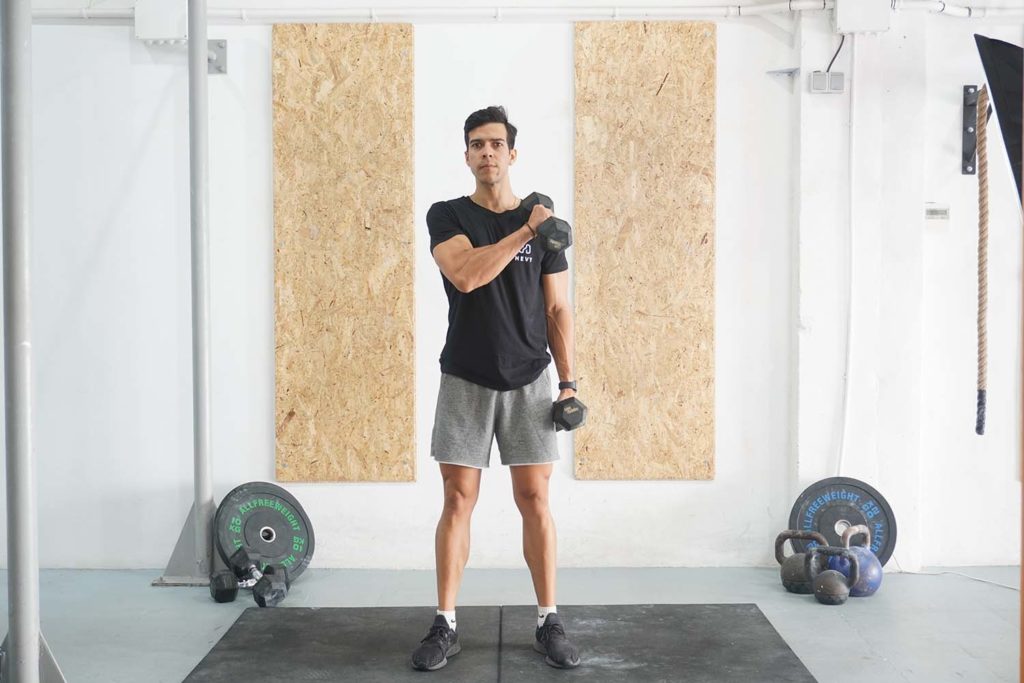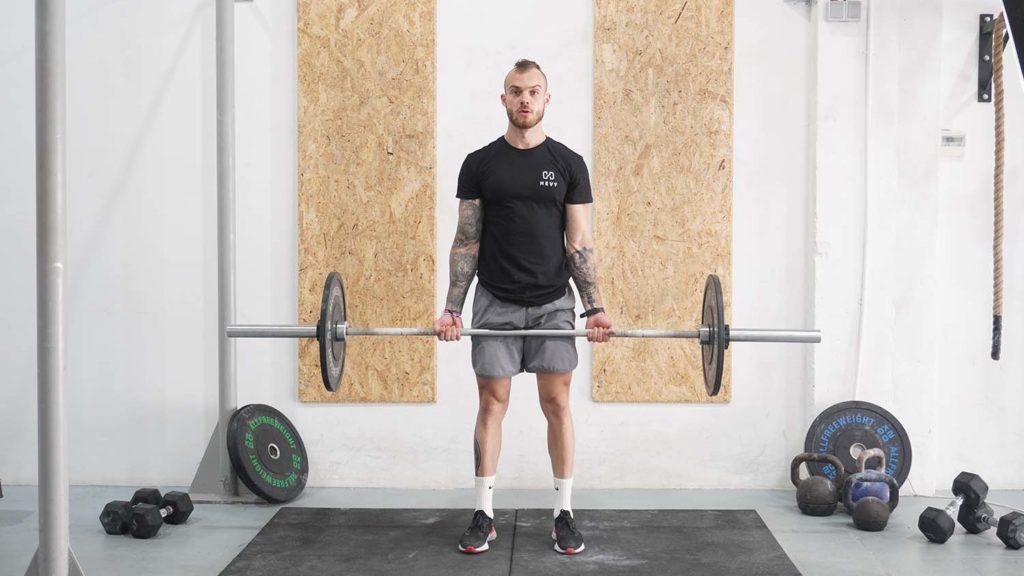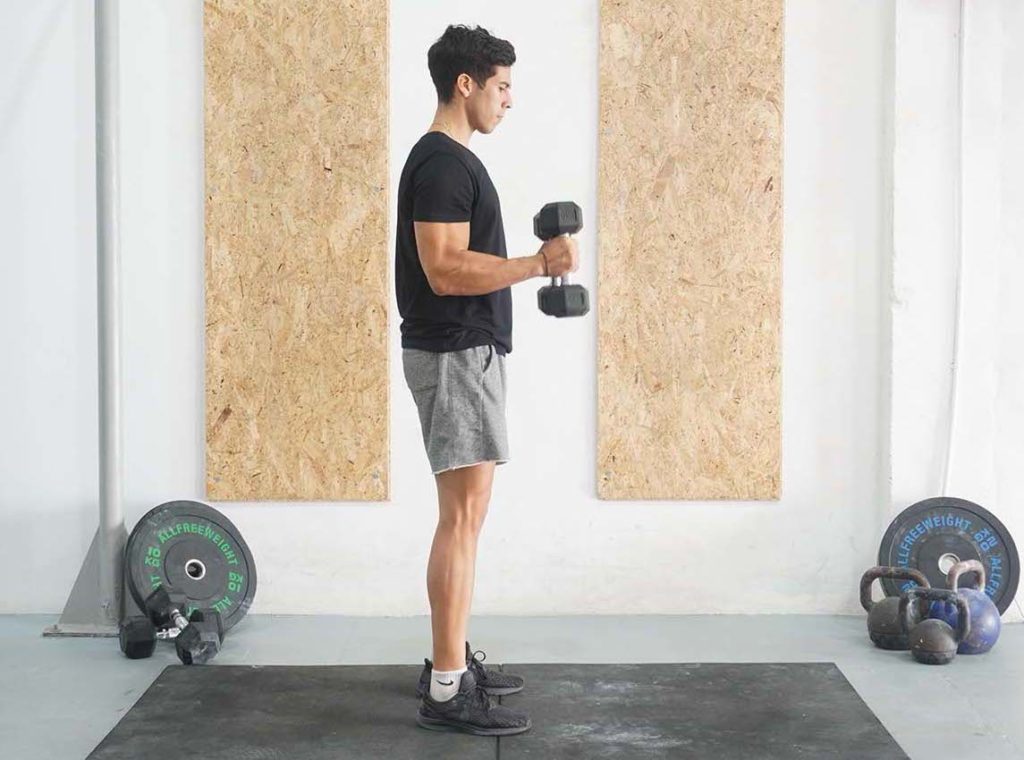The Benefits of the Dumbbell Bicep Curl
Curls are among the simplest and most effective movements for strengthening and developing the biceps. Unlike more complex exercises like the squat, deadlift, and press, curls work around a single joint, the elbow, and target one muscle group––the biceps. As such, beginners find it easier to master the movement because they have fewer things to learn.
The objective is to grab a pair of dumbbells and curl them repeatedly, which activates the biceps. Despite the outward simplicity, you have to learn a few things to get the most out of your bicep curl. More importantly, you have to be aware of potential errors that can reduce the movement’s effectiveness. We’ll go over everything you need to know below.
A notable benefit of dumbbell curls is that you train both sides of your body independently. As a result, both biceps have to engage equally, reducing the risk of muscle imbalances. In contrast, your stronger side could take over during a barbell curl, leading to imbalances.
Similarly, a benefit of bicep curls is that you develop two other muscles aside from the biceps: the brachialis and brachioradialis (1). The brachialis is a muscle that lies underneath the biceps and assists with elbow flexion (2). Developing it pushes the bicep higher, causing it to appear larger. The brachioradialis is a forearm muscle that assists with elbow flexion and activates better when using a neutral grip (palms facing one another) (3).
Another benefit of dumbbell curls is that the movement isn’t intimidating, and beginners don’t need much practice to learn it and start making progress with their training.
We recommend including dumbbell curls near the end of your workouts. Pick lighter weights, do repetitions through a full range of motion, and perform at least 10 to 12 reps per set.
Level of Exercise: Beginner
How to do a Bicep Curl with a Dumbbell
- Grab a pair of dumbbells and bring them to your sides with your arms straight. Have your palms neutral (facing your thighs).
- Position your feet in a comfortable stance, bend your knees slightly, bring your shoulders back, and squeeze your glutes.
- Take a breath, engage your abs, and curl the dumbbells up as you gradually rotate your wrists out. Your palms should be facing back at the top position.
- Curl the dumbbells until your wrists are slightly higher than your elbows and pause for a moment.
- Lower the dumbbells slowly and rotate your wrists in. As the dumbbells reach the bottom, your palms should be neutral (facing your thighs).
- Extend your elbows fully and exhale near the bottom.
- Take another breath and repeat.
Alternatively, you can perform the exercise while seated on a gym bench or chair. The same rules apply. You can also lift the dumbbells alternatingly. Raise one dumbbell, bring it to the bottom, and immediately curl the other one. Alternate between left and right until you finish the set.
What muscles does the dumbbell bicep curl activate?
The primary muscle group that works during dumbbell curls is the biceps, which make up the front part of our upper arms and produce elbow flexion (arm bending) (1, 4).
Our brachialis is the second muscle that works during dumbbell curls. The muscle lies underneath the bicep and assists with elbow flexion during curls (2).
The brachioradialis is the third muscle that works during dumbbell curls. It covers the top of our forearms and is most active when our wrists are neutral (facing one another) (3).
Our midsection muscles also play a role, mainly during the standing dumbbell curl. The abs, obliques, and other core muscles flex isometrically to provide torso stability as we curl.
Tips on Proper Form when Performing the Dumbbell Bicep Curl
An essential tip to keep in mind for dumbbell curls is to pick lighter weights and do reps with a full range of motion. Extend your arms fully and bend them until your wrists are slightly higher than your elbows on each repetition. Doing so is vital for stretching and shortening the biceps to cause a significant growth response.
Another important tip is to keep your elbows to your sides and avoid having them travel forward and back as you lift and lower the dumbbells. Keeping your elbows stationary is vital for training through a full range of motion. In contrast, unsteady elbows prevent you from squeezing your biceps well at the top or stretching them enough as you lower the dumbbells.
Our third tip for effective curls is establishing an excellent mind-muscle connection on each set. Engage your biceps and feel them work instead of simply moving the weight up and down. Doing so might not seem important, but that simple tweak in your approach can result in significantly better bicep activation, especially for your non-dominant arm.
The next thing to keep in mind for curls is to squeeze your glutes and abs before each set. Engaging these muscles leads to better stability and makes it easier to maintain your balance during the set, reducing the risk of swinging back and forth.
Our final tip for dumbbell curls is maintaining a consistent tempo on each repetition. Curl the weights, pause at the top for a moment, and gradually bring the dumbbells back to the bottom. Doing so allows you to take advantage of three types of contraction: isometric (at the top), concentric (as you lift the dumbbells), and eccentric (as you lower the dumbbells). Each contraction contributes to the growth stimulus, allowing you to get the most out of the exercise.
Variations and Modifications of the Dumbbell Bicep Curl
1. Seated Dumbbell Curl
The seated dumbbell curl is the most straightforward variation of the classic movement. Instead of standing up while doing curls, you perform the exercise from a seated position. Doing so is beneficial for maintaining proper technique and not swinging your body to lift more weight.
2. Incline Bench Dumbbell Curl
The incline bench dumbbell curl is a variation you perform by positioning yourself on an incline bench with the back support at 60 to 70 degrees (nearly upright). From there, bring the dumbbells to your sides and begin curling them. Having your arms in such a position is beneficial for causing a more significant stretch on the biceps.
3. Preacher Dumbbell Curl
Preacher curls are a variation you perform by sitting on a preacher bench and placing the back of your upper arm on the pad. From there, curl the dumbbell until your forearm is almost upright, hold for a moment, and extend your arm. Performing curls on a preacher bench prevents other muscles from contributing, forcing your biceps to do all the work.
Mistakes to Avoid
Lifting too Much Weight
A standard error with bicep curls is attempting to lift too much weight. Doing so forces you to shorten the range of motion, swing your body, and use momentum, taking the tension away from your biceps. Remember that curls are an isolation movement for training the relatively small bicep muscle. A much more effective approach would be to pick lighter dumbbells you can control and lift for at least 10 to 12 smooth repetitions.
Unsteady Elbows
The second error to watch out for is allowing your elbows to travel forward and back. Unsteady elbows prevent you from training through a full range of motion to effectively stretch and shorten your biceps. As a result, the movement becomes less effective. Avoid the error by keeping your elbows to your sides and only moving them through flexion and extension.
Failing to Rotate Your Wrists
The third error to watch out for is not rotating your wrists enough on each repetition, preventing you from engaging your biceps well. Fix the mistake by starting with your wrists neutral (facing your thighs) and rotating them out so your palms face back at the top of the curl.
Similar Exercises to the Bicep Curl with a Dumbbell
Pinwheel Curl (Dumbbell)

Pinwheel curls are a variation you perform with a pair of dumbbells. But, instead of lifting the dumbbells forward and combining the motion with wrist rotation, you must keep your palms facing your body. The second significant difference is that you must lift the dumbbell across your body and have the weight in front of your chest at the top.
Bicep Curl (Barbell)

Barbell curls are excellent for overloading your biceps with more weight and causing greater mechanical tension for muscle growth. Using a barbell means that you cannot leverage wrist rotation, and your palms must face forward at the start of each repetition. Still, a barbell works both biceps simultaneously, saves you time, and allows you to train with a heavier load.
Bicep Curl (Cable)
Cable curls are another popular alternative to using dumbbells. Training your biceps on a cable machine is beneficial because there is constant tension on the involved muscles, which forces them to activate and grow better. Plus, you can tweak the movement by changing the pulley height and using various attachments (straight bar, handle, rope, etc.).
Hammer Curl (Dumbbell)

Hammer curls are an effective variation that trains your biceps and brachioradialis more evenly. The goal is to maintain a neutral wrist position (palms facing in) from start to finish. Compared to bicep curls, hammer curls allow you to use slightly more weight and overload both muscle groups.

